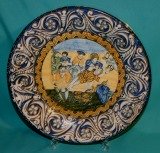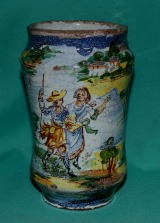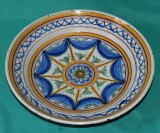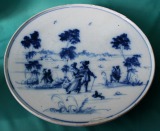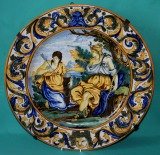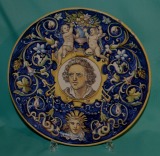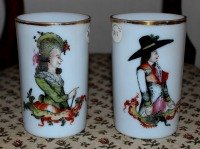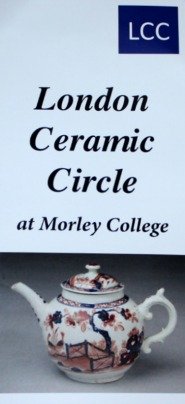Antique Maiolica Pottery
Maiolica is tin-glazed earthenware that was introduced to Italy around the 13th Century. Its name probably derives from the Italian word for the island of Majorca near Spain, through which Hispano-Moresque wares were shipped in 14th Century. The clay was twice-fired for durability, than enamels were applied to the glossy surface. Production and decoration before 1400 was limited and naive, but became increasingly sophisticated from the 15th Century.
The main maiolica centers were Florence, Faenze, Deruta, Orvieto and Naples. The number of potteries increased in the 16th-17th centuries when manufacturing peaked. During this period the decoration was colourful end elaborate, often depicting biblical and mythical themes. The images of these "istoriato" wares were inspired by the works of artist such as Raphael.
By the late 17th Century Chinese porcelain and French faience designs had become more influential and Italian maiolica no longer lead the field.
|
Fine Italian Maiolica Charger with martyrdom scene Stock Number PY1341 18th Century Maiolica Albarello Stock Number PY1344 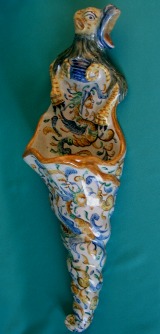 19th Century Maiolica Cornucopia/Wall Pocket Stock Number PY1349 18th Century Continental Maiolica Dish Stock Number PY1421 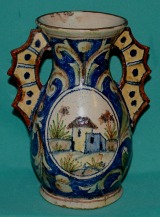 19th Century Maiolica Vase, signed "1535 N" Stock Number PY1347 |
Fine Early 18th Century Savona Maiolica Tazza
SOLD Large 19th Century Italian Maiolica Charger "Diana and Callisto" Stock Number PY1414 Fine 19th Century Italian Maiolica Portrait Dish Stock Number PY1342 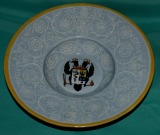 An Italian Maiolica Armorial Tondino, 19th Century Stock Number PY1348 Two Castelli Cups and Saucers SOLD |
NEWS
LATEST CATEGORY:
ANTIQUE GLASS
Useful Links:
Guide To Pottery & Porcelain Marks

We accept Bitcoin Payments
